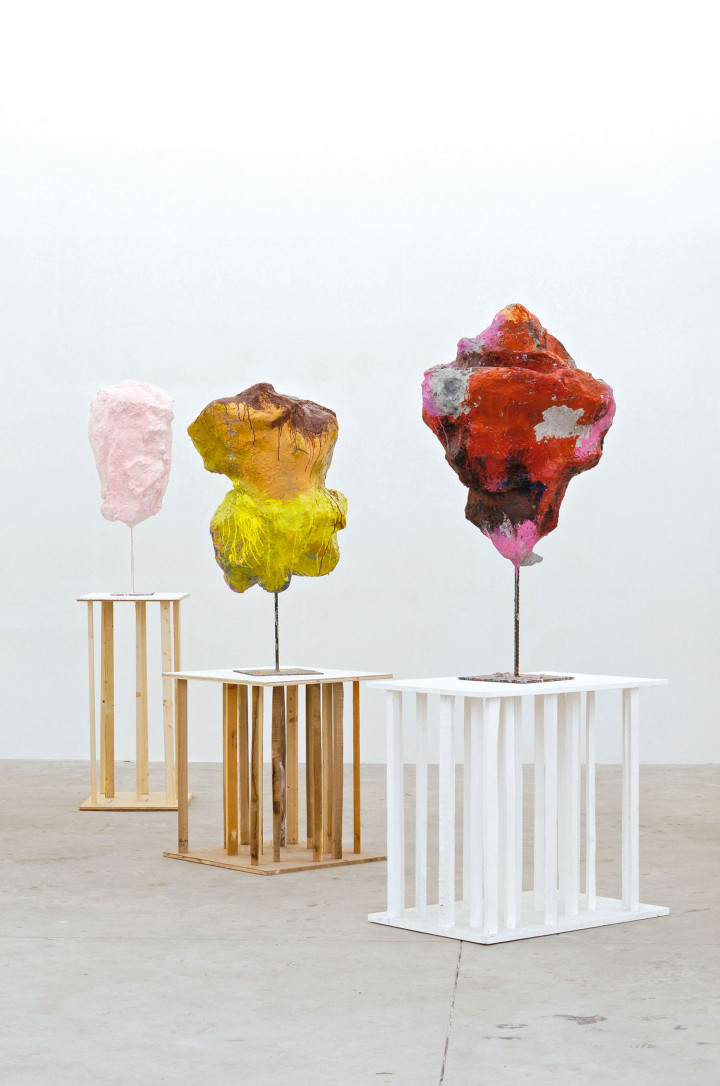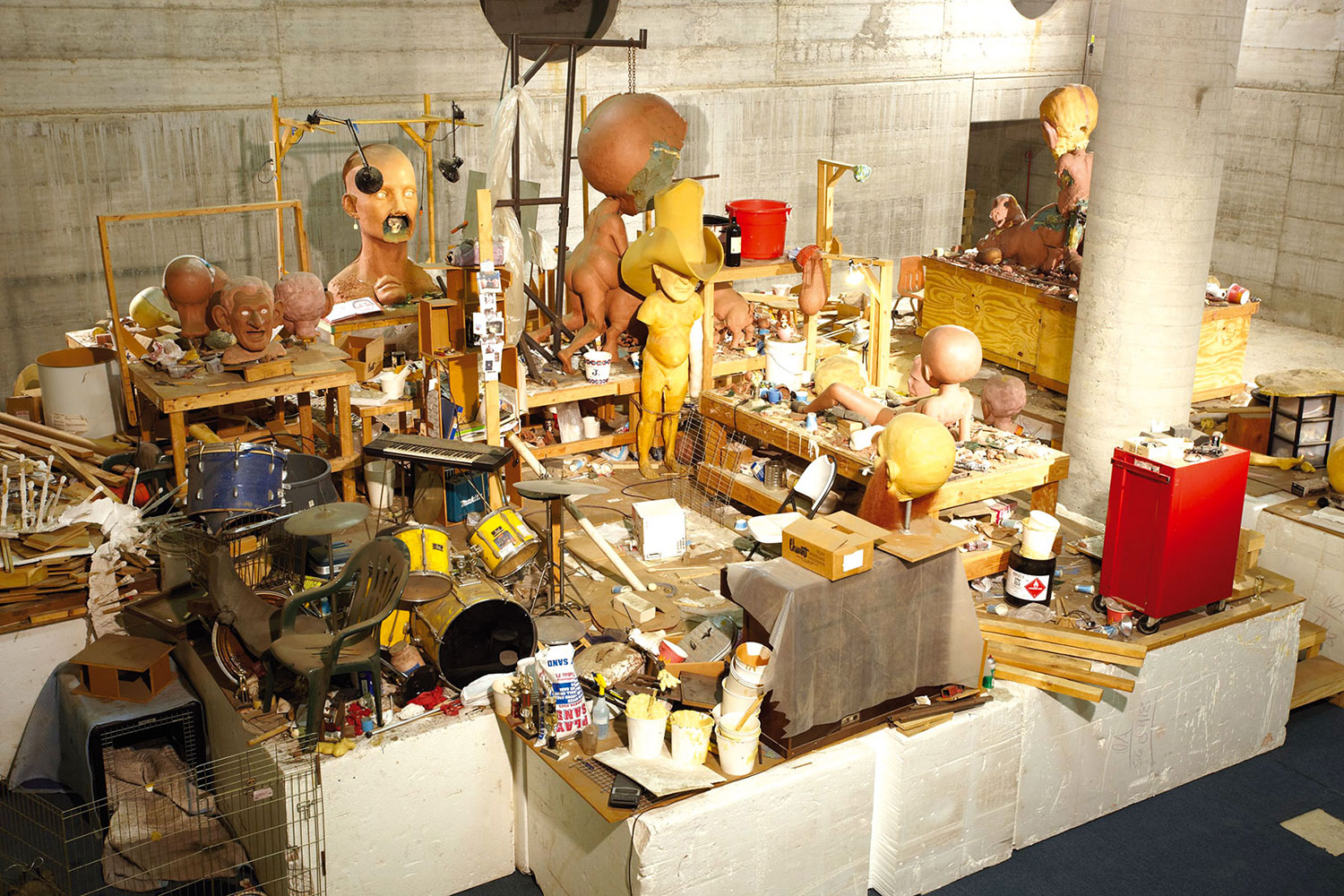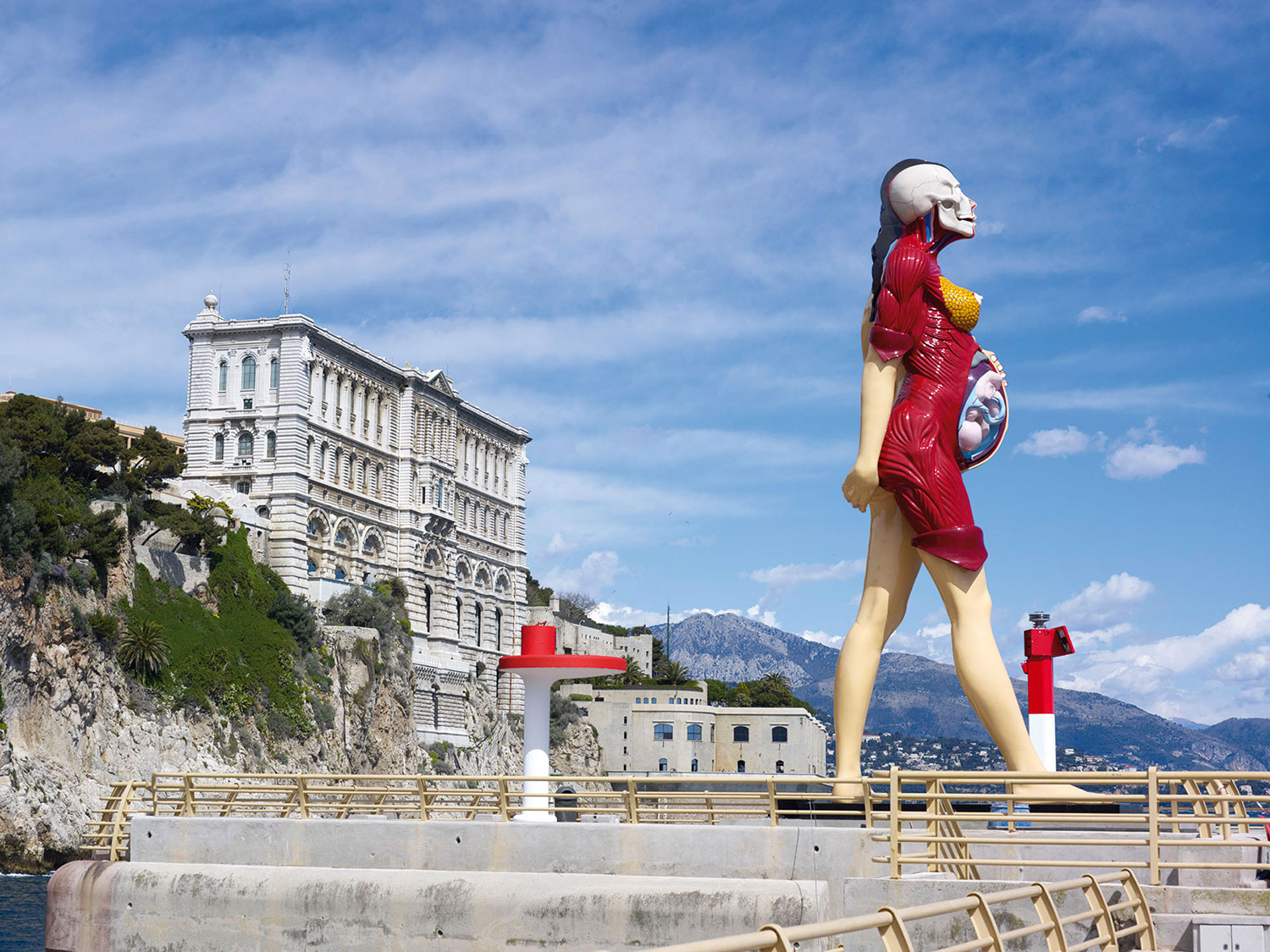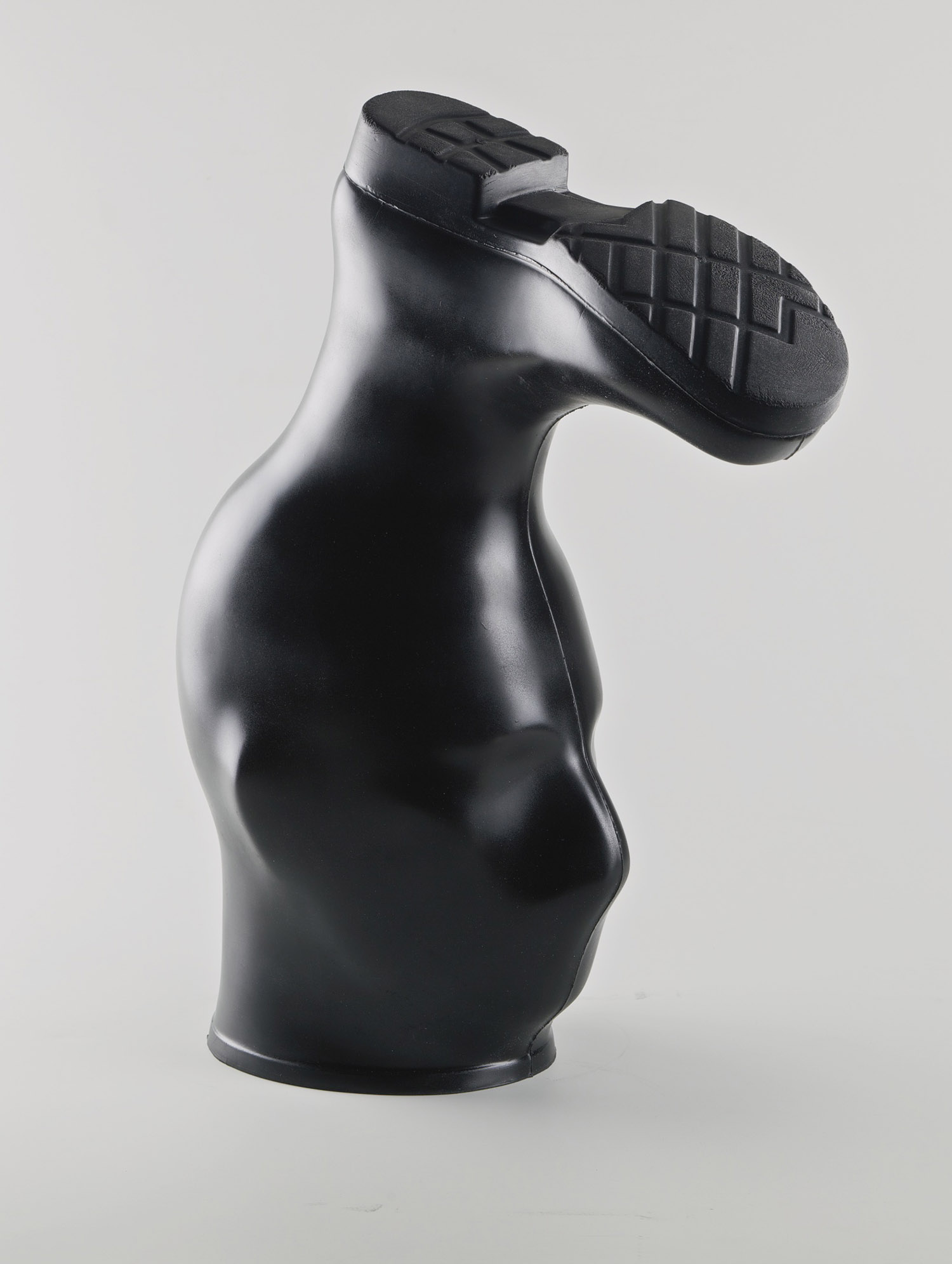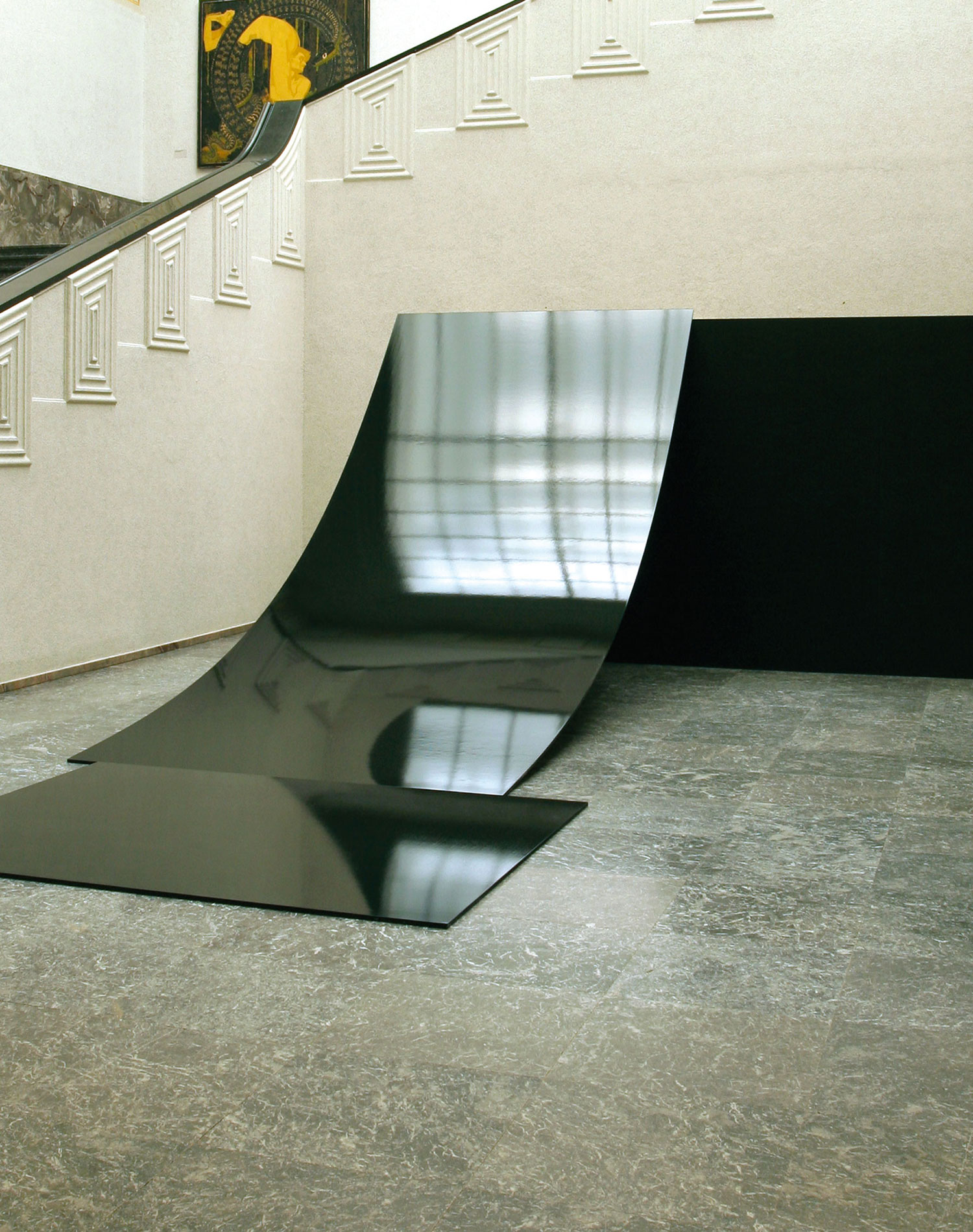
Darsie Alexander: What’s your earliest childhood memory? Who was the single biggest influence on your life besides your mother? You have embraced various amorphous forms throughout your career, which have variously resembled body parts, rocks, parts of instruments, food and comic-book blobs. What shapes do you think about when you go to bed at night?
Franz West: I was bathed in a water basin. My brother. I think about leaf-like, bluish, long, rotund-ending, self-devouring, floating, sometimes shiny, sometimes unfortunately foul-smelling bags.
Tom Eccles: There’s a Viennese saying that after a hard night drinking you ‘wake up to zombies.’ What do you wake up to now?
FW: I wake up angry and fight with my wife, beat my children and spit down the street. Then I eat some fruit, brush my teeth, dress up and take a cab to the studio.
Gelitin: What do you do on Sunday? What was your last carnival costume?
FW: This Sunday I’ll go to Baden, a little village near Vienna, where my children spend their summers and I’ll hang around with them. My last carnival costume was a helmet.
Tim Van Laere: In the process of your work, you often play with free associations, word games and very original titles; in some cases you write special texts for certain sculptures. For instance, the monumental sculpture Ein Hod (2008) that we showed a year and a half ago in the Antwerp Sculpture Show. How did this title, text and this work come about?
FW: I am often awake after midnight and am busy with the sculptures that I am working on. In a kind of half sleep, I have associations according to things I have read, seen and experienced…
Alison Gingeras: I was wondering if your passionate interest in music — especially improvisational, experimental or street guises — is in a way an apt metaphor for your studio practice, and perhaps your philosophy of art making?
FW: Yes, sort of… I imagine so! When a concert is very good (mainly experimental music, I like street music less) I get the impression that, when all my senses of perception have been eliminated, the way I hear is forced to renew itself. I hope that this affects my ossification-threatening designs.

Rachel Harrison: Robert Rauschenberg once said that there is no such thing as a bad color. Do you agree? Are there any colors you avoid or would never use?
FW: I don’t like reddish violet. Before I did not like many colors and used them especially for that reason, but after 20 years, they seem pleasant. It seems to be the case, as some philosophers argue — from Heraclitus’s “You cannot step into the same river twice” to Baudrillard’s “Sliding signifiers” — that everything changes.
Erik van Lieshout: Of what shall I be relieved?
FW: From your Oedipus.
Christian Meyer: What is the importance of new media on your work?
FW: Often I tried to use them dutifully, but then I found out it takes too much time, so the only thing I use is my cell phone, which means they don’t interest me.
Paola Pivi: Can we sit on your chairs?
FW: It depends.
Almine Rech: Do you think you could have done something else in life other than art, than being an artist?
FW: This question I never asked myself. If I would ask it now I would not find out for the rest of my life.
Christopher Wool: When looking at a pizza some people have seen an image of the Virgin Mary… I simply see a reflection of my own face… and you??
FW: Me, too.
Denys Zacharopoulos: Is there a formal development in your work, or is it only an organic one? Is it more like a body in time or rather like a form in space? Are questions as such completely obsolete for your work since your practice is related to ruptures, catastrophes, accidents or chances? And, by these means, can we not dissociate body and form, time and space while we perceive or think with the work and not about it?
FW: Surely there is a synthetic development. On one hand there are spatial problems with reality, and on the other hand there is an organic process, but this is just approximate. I don’t research why I did what I did, and so it can also be that this approximation leads to a conclusion.

Rainer Ganahl: Franz, when I see your mostly white Passstücke (adaptives) from the early ’70s, I immediately think of the art of Schwarzkogler who tortured his body, whereas you only play with it and respect it. Could you talk a little bit about this wonderful series that seemed to have been the inspiration for a lot of works made by Erwin Wurm with the title “One Minute Sculpture”? Could you talk a little bit about these inspiring sculptures and their origins?
FW: Yes, for the design I borrowed from a few artists but content-wise my debut is another story — no expression but interaction. This you may not realize from photographs, but it is intellectual, not to mention practical.
Jonathan Monk: What is your favorite color and why?
FW: A pale orange, I don’t know why.
Nicola Trezzi: What do you think of a younger generation of artists who are using the language of design? I’m thinking about Atelier Van Lieshout, Tobias Rehberger, Pae White and Jorge Pardo. Do you feel like a putative father or is their work too ‘interactive’ (or Relational Aesthetics, to quote Bourriaud) for you?
FW: What I do with interactivity does not come from my rubbish. For a long time it was out of interest; it is no longer so, and I am happy about it, because I thought it might become the future.
Annie Claustres: The surface of your sculpture has always intrigued me — it fascinates me. It’s not a pure surface, an ideal one, a ‘perfect’ design surface (good design), but it’s no more a traumatic surface which relates to pathos, negativity or the limit of the experience. Could you let me know what you are looking for? What inspires you in relation to this surface? What about the relationship between the surface of your work and skin (living surface)?
FW: Surface is the sculpture’s skin and I would say they are organic, so it is their expression.
Veit Loers: You are, in a certain private way, occupied with the philosophy of Hegel. For him the relationship between the terms is like a relation between human beings. Could you see this animation also in the constellation or disposition of your Alu-plastic or papier-mâché sculptures?
FW: Of course!
Paul Nesbitt: I don’t know much about cars but I love beautiful cars, and when you came to make your exhibition for us in the Royal Botanic Garden in Edinburgh, you told me you owned not one, but two Maserati Quattroporte (one of the most beautiful cars ever produced which, when introduced in 1963, was the fastest four-door saloon car in the world). You subsequently turned one of them into a sculpture. What happened to the other one?
FW: I liked these cars as well. The second one I could sell luckily, because most people don’t want a secondhand Maserati. I had the experience of driving this car and it satisfied me so much that I don’t need them anymore.

Paul Nesbitt: I remember first meeting you at Inverleith House; it was a very late spring that year and we had invited you to make an exhibition of outdoor sculptures for us (Meeting Points, 2001.) Unfortunately I got your arrival time wrong, and when I opened the door to my office that morning, you were already there. I was embarrassed that there were hardly any flowers to show you — and it was raining (I was wearing a fake snakeskin shirt.) Really surprised to see you, I said, “Spring is late and so am I.” Over lunch, you told me you already had the idea for the poster for the exhibition, which shows you standing, waiting, looking at your watch. Did this choice of image have anything to do with the fact that I was late for our meeting?
FW: What else!
Marc Straus: We are in an era when some well-known artists have much of their work made by assistants. Like Jeff Koons, Damien Hirst, etc. What part of the work do you make yourself? Do you paint the surfaces?
FW: Originally I made everything myself until it got to the metal works, which are done by assistants, and it’s been like that for a while. In the beginning I had to correct often, now I rarely do. I choose colors and then we look at it, it may be corrected afterwards. Indoor works I do mostly myself, only the basic works are done by assistants, now that my mobility is restricted.
Thomas Zipp: Have you ever tried crystal meth?
FW: But of course! I was just in the next room where my chairs will be painted with polyurethane lacquer, and my studio is in a residential area, you can imagine…
Livia Straus: We saw you in Berlin at the recent exhibition of abstract paintings by your wife Tamuna Siriladze at Charim Ungar, which we understood you curated. Have your works influenced one another?
FW: This would be more easily answered by an outsider. We broke the habit of commenting on each other’s work because very often questions regarding initiation came up and both of us strictly neglected the other’s influence. How it is in reality could be judged from a neutral, objective standpoint only. I don’t think that I impinged upon the painting.
Sarah Lucas: What do you eat?
FW: Mostly almonds, right now dried mangos, papaya and pineapple, pata negra, Italian cheese, Italian ripe salami, Italian white bread, dark Austrian bread, fresh fruit. If I go out to eat: risotto, scaloppini, pasta with very good olive oil.

